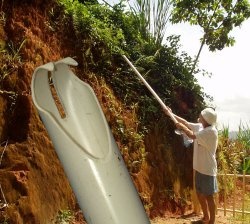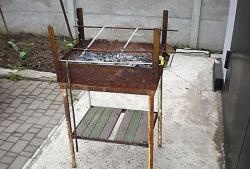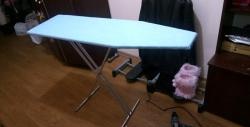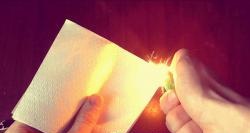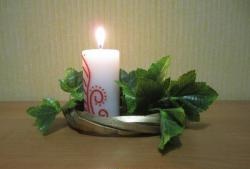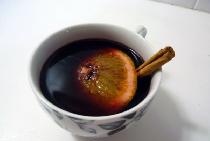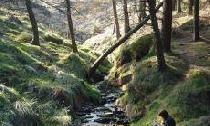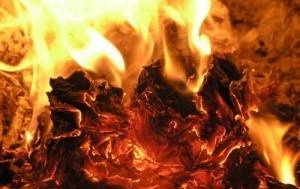
Lighting a fire without matches is not as difficult as it might seem at first glance. By learning this, you can get out of a difficult situation. The duration of survival depends on your ability to make fire. Consider in this article how to make a fire with a knife (any piece of steel). First of all, choose a place for a fire. It should be sheltered from rain and wind. If you need to start a fire in the snow, then the snow is either cleared from the site of the bonfire within a radius of several meters, or a platform is created from thick logs and stones, on which a bonfire is built later.
Branches of dried trees can be used as fuel. In wet weather, look for branches on standing trees, not on the ground. They will be drier, since they are covered with moisture from the crown of a tree, and dry faster in the wind. In addition, dry wood can be found under the trunks of fallen trees. In areas of rare vegetation, you can use dry roots, herbs, peat, animal fat and even coal and shale tar. Sponge spongy fungus, pine needles and cones, tree bark, ferns and lichens, clothing shreds, twine, bird feathers are also highly flammable. An excellent material for making fire is dust, which can be found even in the rain, clearing the wet top layer of decayed logs.
The bottom of the bonfire is lined with dry, even branches into a finger thick so that a layer of air remains under them. This will provide oxygen access, and the branches will act as a blower in the stove. Thin dry twigs, birch bark, pine needles or other, previously described, highly flammable materials are laid on top in the form of a hut.
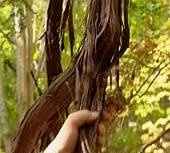
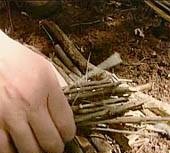
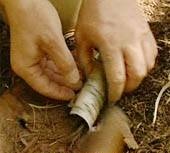
The next step is to make a fire tube for a fire. An excellent material for this is birch bark. If it is absent, a dry pine bark, taken off a tube entirely from a dry branch, is suitable. In addition, you can use dry grass, fern leaves, etc. Inside the tube are placed several thin resinous twigs, pine needles, thin strips of birch bark.
Now you need to decide on the tinder. It is also very important that it is dry and flammable. As a tinder, a piece of cotton wool from the lining of the jacket, dust, felt, the smallest shavings, etc. Now we come directly to the production of fire. In order for the tinder to begin to smolder, a small spark is enough. Such a spark is carved in an ordinary lighter and is well known to everyone. To do this, a hard stone is struck or struck with a steel bar.
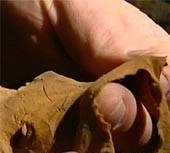

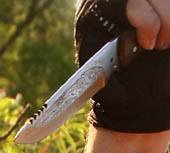
Choose a fist-sized stone on the ground — silicon, granite, marble, and other hard rocks are fine. If the stone is smooth and has no sharp corners, break it between two others, large in size. At a distance of a millimeter a piece of tinder is applied to the face of the stone, after which a knife is struck on the face of the stone in the direction of the tinder. A spark falling on a dry tinder will certainly cause its smoldering, you will see a faint string of smoke. Gently, not strongly, but evenly and continuously, blow the tinder to increase the smoldering area.
If the stone crumbles and sparks do not heal, do not despair. Select another stone and try again. If you do not have a knife or other piece of steel, a spark can be carved by striking the face of one stone against the face of another.
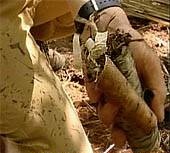
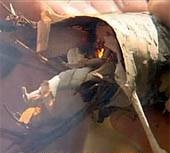
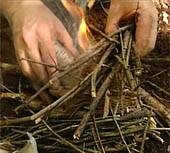
After receiving a smoldering piece of tinder, it is placed in a pre-cooked tube. Holding it at a distance of 25-30 centimeters from the face, begin to smoothly and evenly inflate the coal.Air will pass through the tube, heating its contents, the coal will grow, and soon the birch bark and needles will flare up. Using the bundle as a big match, set fire to small dry twigs in a fire.
It should be remembered some recommendations for preserving mined fire. If you put a thick rotten log or, on the contrary, a freshly cut log into the fire at night, the fire will burn slowly and for a long time. If you save the red coals of the fire, sprinkling them with ash and a layer of soil from above, then it will be easier for you to get fire in the morning. In addition, several small bonfires made around will warm you better than one big one.
Another way:
Making a fire without matches.
To do this, you will need what is in any house - this is potassium permanganate and glycerin.
Pour about 1 gram of powdered potassium permanganate (potassium permanganate). Then, gently drop 2-3 drops of glycerin onto it from a pipette or from a glass tube and quickly remove your hand. Only 2-3 seconds will pass, and you will see how the fire breaks out.
ADDITIONAL MATERIAL
How to make a fire? How to light a fire without matches? Types of bonfires
Fire is necessary for heating, drying clothes, alarm, cooking, purifying water by boiling it. Survival time will increase or decrease depending on your ability to make fire.
If there are matches, you can make fire in any conditions and in any weather. If action is expected in remote areas, stock up with enough matches that you should always keep with you in a waterproof bag. It is necessary to learn how to keep the match flame in the strong wind as long as possible.
Bonfire spot
Campfire site.
It is selected in an open, but sheltered from the wind, a safe place, preferably near water. A bonfire should be built on well-trodden sites or on old bonfires. It is advisable to have a sapper blade with you: it is convenient for her to remove the sod from the place chosen for the fire. In extreme cases, an ax is used for this. In any case, all dry leaves, branches, needles, grass, can catch fire, should be removed from the fire at a distance of 1-1.5 meters.
Fire safety.
This is the main requirement when choosing a place for a fire. You cannot make a fire closer than 4-6 meters from trees, tarry stumps or roots. Tree branches should not hang over the bonfire.
Do not make fire in coniferous young growths. A terrible horse fire can easily arise here.
Do not make bonfires in areas with dry reeds, reeds, moss or grass. Fire goes on them with great speed.
A bonfire is dangerous in the clearings, where there are remains of forest combustible materials: here the fire spreads quickly, and the fire started is difficult to stop.
Do not make a bonfire on peatlands. Remember that smoldering peat is very difficult to extinguish, even filling it with water. Undetected smoldering can easily turn into a fatal peat fire.
Bonfire
Kindling.
The bonfire kindling begins with the preparation of kindling, which is made of small spruce branches, birch bark, dry moss, lichen, shavings, and splinter. In wet weather, the kindling is mined from the wood of an ax chopped by an ax, from dry coniferous litter, sheltered from the rain by the crowns of trees.
The prepared kindling – fuse is tightly placed under the small brushwood that is folded up with a hut or a well and set on fire, and on top a neatly thicker brushwood and other firewood.
In the rain, a bonfire is made under cover of a cloak or cloak that is held by two tourists. The stronger the wind or rain, the denser the fire and fuel should be placed on the fire. In bad weather, you need to have dry alcohol with you, an old film, a candle cinder, a piece of plexiglass or rubber.
Making fire without matches.
Before you try to light a fire without matches, prepare a few dry, flammable materials. Then cover them from the wind and moisture. Good substances can be rot, clothing rags, rope or twine, dry palm leaves, wood shavings and sawdust, bird feathers, woolly villi of plants and others.To stock up on them for the future, put the part in a waterproof bag.
The sun and the lens.
The camera lens, a convex lens from binoculars or a telescope, and finally, a mirror can be used to focus sunlight on flammable substances.
Flint and flint (steel plate).
If there are no matches, this is the best way to quickly light a dry tinder. As flint, the corresponding side of a waterproof match box or a solid piece of stone can serve. Hold the flint as close to the tinder as possible and hit it against the steel blade of the knife or some small block of steel. Hit so that sparks hit the center of the tinder. When it starts to smoke, lightly blow on the flame. You can add some fuel to the tinder or transfer the tinder to fuel. If you fail to carve a spark with the first stone, try with another.
The friction of a tree on a tree.
Given that getting fire by friction is quite difficult, use it as a last resort.
Bow and auger.
Make a springy bow by pulling it with a string, rope or belt. Use it to scroll a dry, soft shaft in a small hole made in a dry, hard block of wood. As a result, you get a powdery black dust, in which a spark will appear with further friction. Lift the unit and pour this powder onto a flammable substance (tinder).
Firewood for the fire.
Near settlements, as well as in settled areas, firewood that is not suitable for the household needs of the local population, for example, small felling, dry crooked forests, and old stumps can be used as fuel. If there is no such fuel nearby, firewood should be purchased through forestry or take stoves and gas stoves with you on a camping trip.
In the taiga regions there is enough brushwood, deadwood, dead wood. When preparing fuel, it should be borne in mind that raw and rotten firewood gives a lot of smoke, but little heat; fine brushwood burns out in the first two three minutes; aspen and fir firewood are bad because they “shoot” sparks too much.
For cooking, it is better to use the deadwood of birch and alder, which burns evenly and almost without smoke. If you need to build a large hot bonfire, for example, in winter with an overnight stay, the best firewood will be from pine, cedar and spruce dead wood.
Dead wood roll.
Harvesting dead wood for a fire, first determine the natural slope of the tree and the place of its possible fall, then look at the probable path of the falling tree to make sure that it does not hang on neighboring crowns, and only after that, on the side where the tree is intended to be felled, a hem or filed by a third of the trunk diameter.
The second subcut (filed) is made on the opposite side about a palm above the first. Cutting down a tree, it is necessary to alternate striking at an acute angle with direct blows, which “choose” the wood. If the tree does not fall under the influence of its own weight, use a wooden wedge or a lever - a vagu, by which its fall is directed to an empty area. It is necessary to observe safety measures. There should be no people not only at the site of the alleged fall, but also behind the tree, because it can bounce back with a butt.
Especially careful should be in windy weather, in the presence of nearby rotten or weakened trees. It is impossible to fell a tree at dusk, as well as to leave a felled or sawn tree not felled.
Types of bonfires
"Hut"
A bonfire of the “hut” type is convenient where tourists are going to cook food in a small amount of dishes and at the same time want to illuminate the camp site. The advantage of this cone-shaped or gable fire is that it is not thick “waste” firewood (brushwood, felling) that goes to it as fuel. Giving a high bright flame, the bonfire at the same time has a very narrow heating zone and forms few coals, needing to be constantly planted in a dry place.
"Well"
This is a type of hot bonfire. It is made up of more or less thick short logs laid in rows. Burning slowly, logs form a lot of coals, giving a high temperature.Such a bonfire is convenient for cooking, as well as for heating and drying clothes.
"Taiga bonfire"
It consists of logs 2-3 m long, laid along or at an acute angle to each other. The wide front of the fire allows you to cook food for a large group on it, dry things, and also spend the night near those who do not have tents. Relating to long-acting bonfires, “taiga” does not require frequent lining of firewood.
"Nodya"
For such a bonfire, smooth logs are harvested and cleaned of branches and twigs. Two logs are placed side by side on the ground, then a good kindling or, even better, coals from the “ignition” fire is placed on them. From above everything is pressed by the third log. "Nodya" gradually flares up and burns with an even hot flame for several hours without additional fuel. You can control the heat by slightly pushing and moving the lower logs or pushing the third log – regulator of air draft.
If you have potassium permanganate and glycerin, then when mixed, you can get fire.
